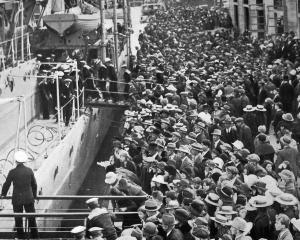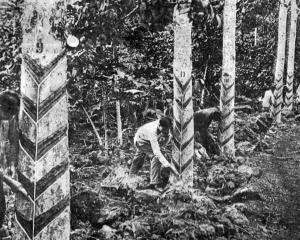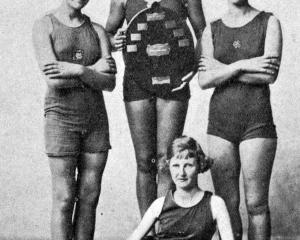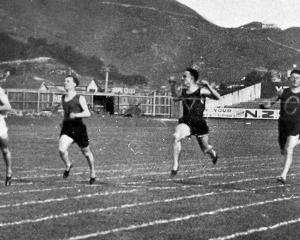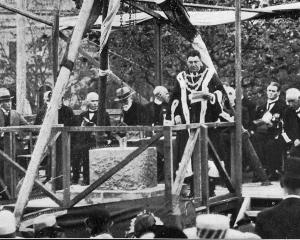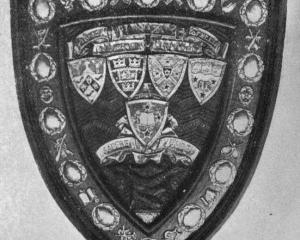To the northern end of the esplanade the surf had eaten away the sand to a depth of six feet or more, and within two or three feet of the base of the wall at one point.
The uselessness of the wooden groynes with which the St Clair Beach is studded was never more clearly demonstrated than at present.
So little have they served to prevent the erosion of the last month or two that, standing high above the beach in their gaunt nakedness, they now only mark the more unmistakably the depth to which the sand has been scoured away, and the scour is always deepest at the base of the groyne.
Doubtless when the prolonged spell of westerly weather ceases there will be a change again for the better, but in the meantime the appearance of the beach at St Clair is not particularly satisfactory.
• Dr Mortensen, the Danish scientist, who is studying the marine biology of New Zealand, was a passenger on Saturday through to Bluff, where he will board the Amokura, en route to the southern islands.
Dr Mortensen, who is a member of the staff of the University of Copenhagen, states that he has been commissioned by the Danish Government to make an investigation of the marine life of the Pacific.
Dr Mortensen left Denmark about 12 months ago, but even then, he said, the Danes were expecting the big European conflagration to break out shortly.
The sympathy of the Danes was wholly with England.
Apart from everything else, the treatment by the Germans of Danes in Schleswig-Holstein made the Danes hate the Teutons.
The Danes were not allowed to use their own language, nor allowed to frequent their own churches, and in every way were oppressed.
The young men were forced to serve in the German Army, and were every time put in the firing line. Naturally, the Danes, both in Schleswig-Holstein and in Denmark, were praying for the time when the might of the Teuton would be crumpled. but what could Denmark do to assist?
If she declared war the German fleet would immediately blow Copenhagen to pieces, the British fleet being unable to come to its rescue owing to the mining by the Germans of Danish waters.
''When I first arrived in Australia,'' remarked Dr Mortensen, ''I could not make out why I was treated in the hotels I stayed at so impolitely, until I found out that I was being taken for a German. Now I take good care to let my nationality be known.''
• A private letter received in Napier from a Territorial aboard troopship No. 7 states that one of the South Island boys fell overboard from the Athenic, but was rescued little the worse for his immersion.
A weekly newspaper, christened ''The Gunner'', has been launched in troopship No. 7, Hiscocks (Wellington), the well-known cartoonist, doing the sketches, and Blomfield (Auckland) occupying the editorial chair.
The first issue was limited to 50 copies, owing to shortage of plant, and these were put up to auction, realising prices from 3s 6d to 11s each - truly a journalistic paradise. - ODT, 18.11.1914.
• COPIES OF PICTURE AVAILABLE FROM ODT FRONT OFFICE, LOWER STUART ST, OR WWW.OTAGOIMAGES.CO.NZ

